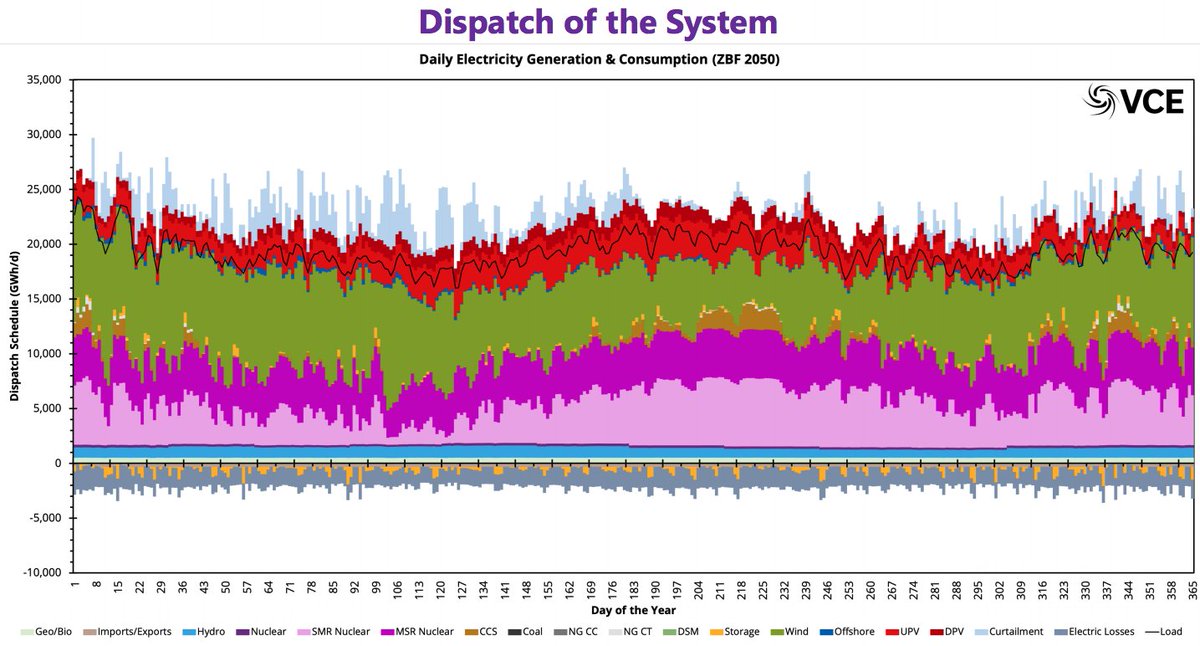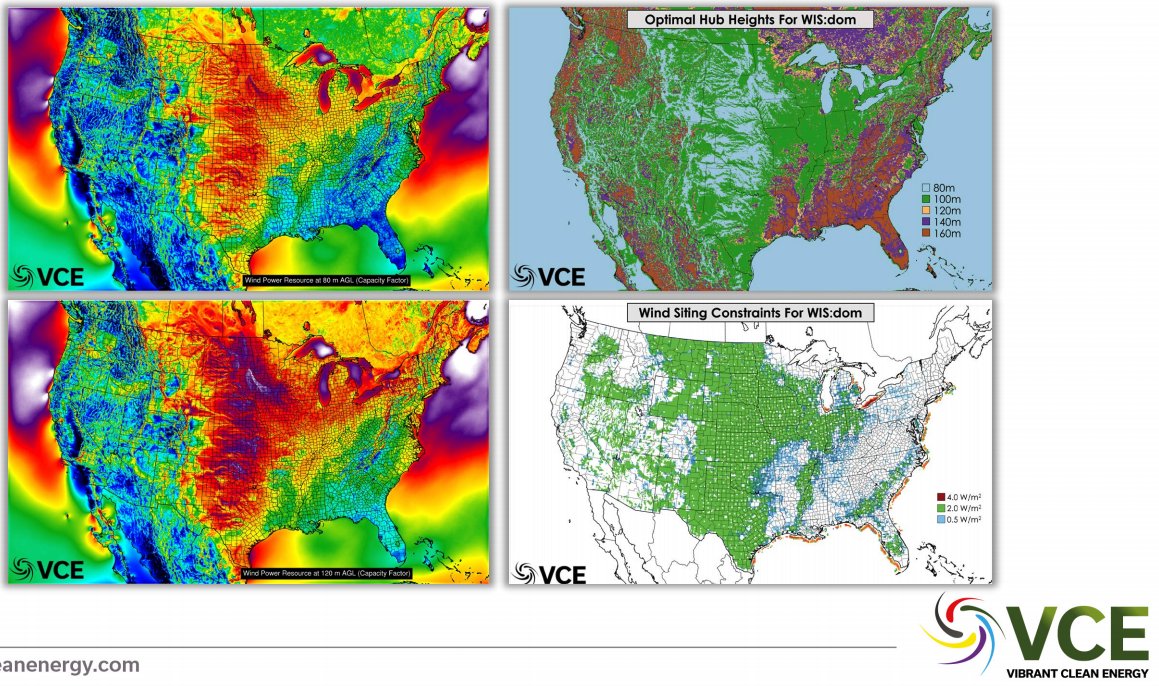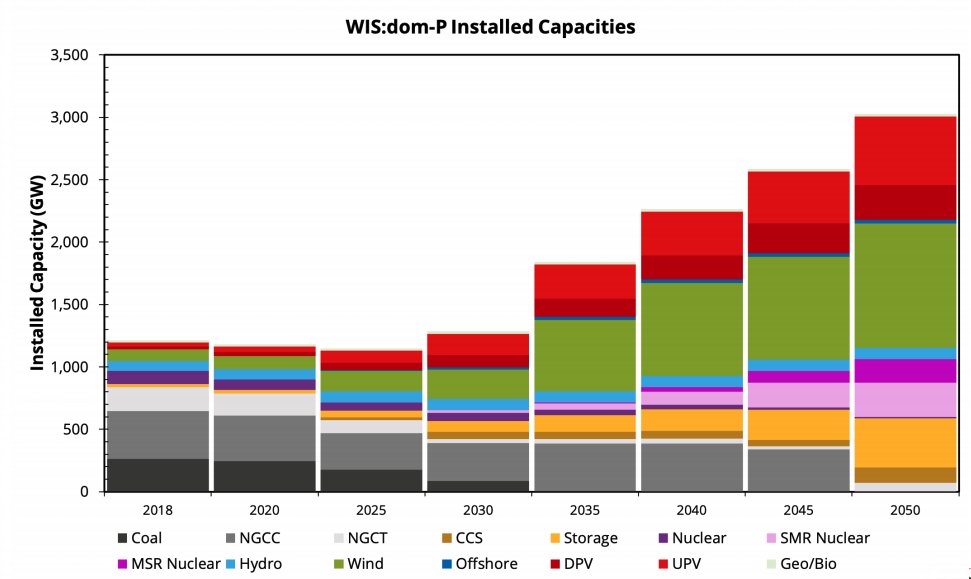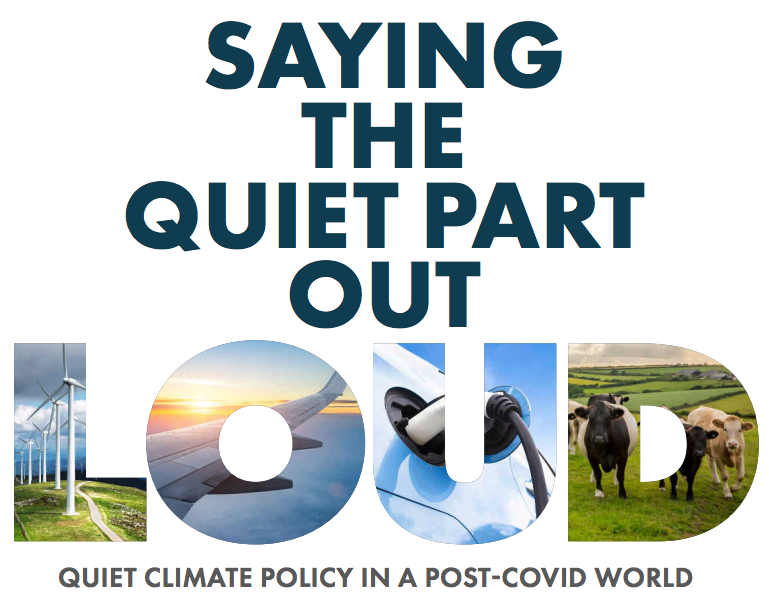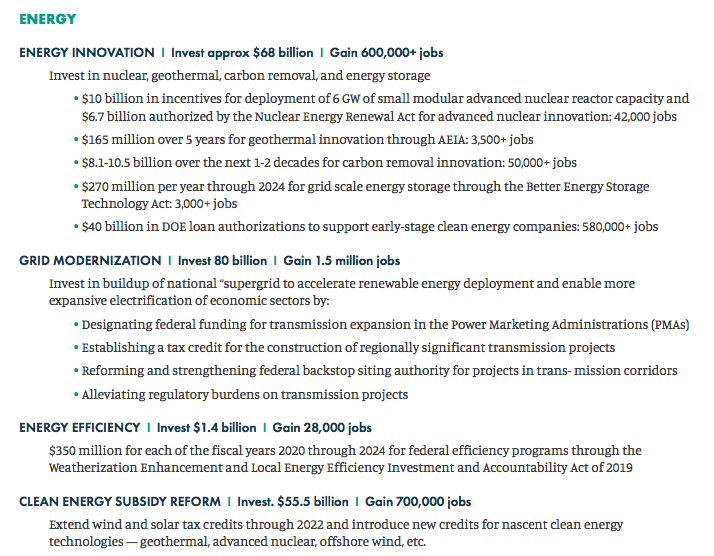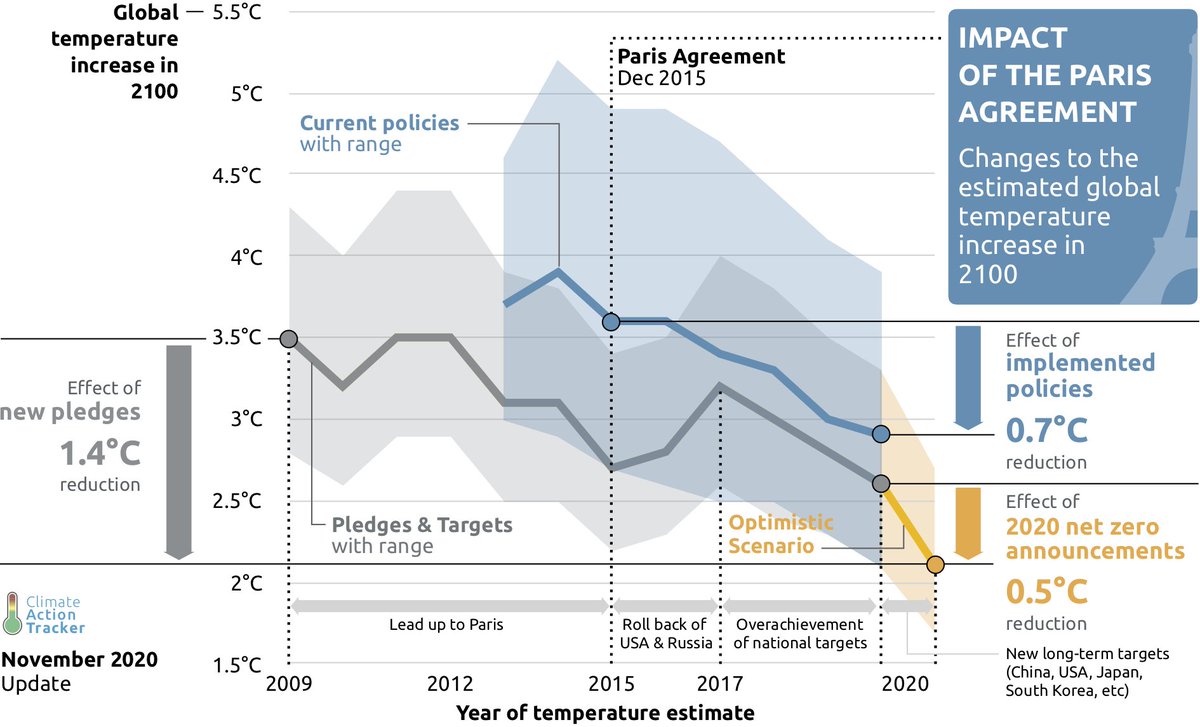
Ten years ago I made a bet with @BigJoeBastardi; he thought that the world would cool, while I projected it would warm. We settled on a paid dinner for me each year 0.1C above the prior decade avg (2001-2010) and for him each year 0.1C below, using UAH.
He now owes me 5 dinners
He now owes me 5 dinners

I had originally suggested a $10k bet, based on the past warming trend continuing, as I outlined here: rankexploits.com/musings/2011/b… 

Joe countered in the comments that he was not willing to wager $10k, but was happy to make a bet around dinners. He suggested using UAH satellite troposphere data instead of surface temperature data, and making it relative to the prior decade's average: 
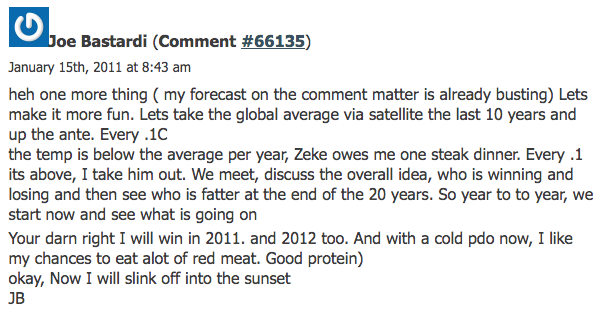
Eagle-eyed viewers may note that one year (2011) in the figure in the first tweet was in the "Joe wins a dinner" range. Back in 2011 only UAHv5 (blue line) was available, but we did not specify if the winner would be based on data available at the time or retrospectively.
I'm happy to take one dinner out of my winnings, and only have Joe owe me four. That said, he has studiously ignored the results of this bet in the past, so I'm not particularly optimistic about him paying up...
Also, while Joe suggested steak dinners, I'm more than happy to take my winnings in the form of lower-cost (and lower-emissions) non-steak options. Perhaps a box of @ImpossibleFoods burgers instead?
• • •
Missing some Tweet in this thread? You can try to
force a refresh




